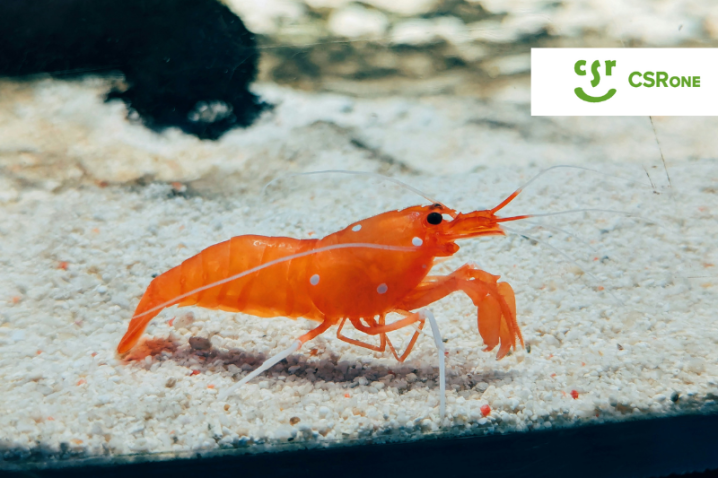
In A-Lian's lab, a neglected form of waste—shrimp shells—is quietly reshaping the future of environmental technology. The research team isn't just aiming to reduce the mountains of shells piling up in seafood markets; they're also trying to transform these byproducts into valuable carbon capture materials. It's a classic "waste-to-treasure" story.
Is seafood waste a carbon-reducing resource?
Over six million tons of shrimp and crab shells are discarded globally each year, mostly in landfills or incineration. These seemingly useless shells are actually rich in chitin and calcium carbonate. Scientists have keenly grasped this property, using them as a natural raw material for porous carbon materials. This isn't just about reducing waste; it's also part of a carbon neutrality strategy.
Amid the pressures of climate change, research like this carries a powerful symbolic weight, reminding us that the solution isn't always expensive new technology; sometimes the answer lies in the trash cans of the fish market.
University of Sharjah breakthrough: From food waste to activated carbon
A research team from the University of Sharjah in the UAE collected shrimp shells, heads, and intestines, cleaned and dried them, and then fed them into a high-temperature pyrolysis device. This step converts the organic residue into biochar, preparing it for the next step of "energy empowerment."
The researchers then used acid washing and KOH activation to create fine pores on the material's surface. Finally, they used ball milling to increase the specific surface area. This engineering process transformed the shrimp shell waste into "black gold" capable of capturing carbon dioxide.
Test data shows that this shrimp shell activated carbon has an adsorption capacity exceeding 5 mmol/g and remains stable over multiple cycles. For the power, cement, or steel industries, such a material could be effective in high-emission flues over the long term. In other words, it transforms waste into a true weapon against climate change.
The story of the circular economy: from pollution source to green commodity
The spirit of the circular economy is to give waste a second life. The value of shrimp shell waste is vividly demonstrated in this case study. Rather than allowing it to release methane in landfills, it can be upgraded into highly efficient carbon capture materials.
This transformation is a double win: it not only processes fishery waste but also provides the tools industry needs to reduce its carbon footprint. A byproduct that ends up in the trash now has a chance to end up in the pipes of a cement plant, protecting the planet.
More importantly, the research team isn't just focused on technological breakthroughs. They're exploring more environmentally friendly alternatives, such as replacing the strong alkaline activator with potassium acetate, to make the entire process more sustainable. This isn't just about technology; it's also about system design.
Global peers: Responses from China, Japan, and Europe
Yilian's research is just the tip of the iceberg. In recent years, laboratories around the world have also been using shrimp and crab shells as a treasure trove of emerging materials.
In 2022, researchers in China used chitosan to create nitrogen-doped porous carbon, which can absorb approximately 5 mmol/g of CO₂ at room temperature and pressure, and even exceed 7 mmol/g at low temperatures. This achievement demonstrates the feasibility of a "green process."
In Japan, research in 2021 focused on low partial pressure conditions, simulating the flue gas environment of coal-fired power plants. Their material maintained good adsorption performance at 0.15 bar CO₂, demonstrating its potential for industrial application.
In Europe and Iran, researchers are further exploring the performance of crab shell activated carbon in natural gas purification. Under high pressure, adsorption capacity has even exceeded 18 mmol/g. These examples highlight a common trend: seafood waste is becoming a global environmental solution.
Industry prospects: closed loop from fishing port to factory
Imagine a future where shrimp shell waste from fishing ports is no longer discarded. Instead, it is processed into carbon-capturing pellets in a materials processing plant. These pellets are then sent to power plants, cement plants, and steel mills to absorb carbon dioxide emitted from chimneys, completing the "waste-material-carbon reduction" closed loop.
This circular economy not only brings environmental benefits but also creates new markets. From fisheries to energy, industrial chains are being reconnected, and resources no longer flow in a straight line, but form a sustainable cycle.
Furthermore, these porous carbon materials can be extended to air purification, water treatment, and even medical applications. This makes shrimp shell waste a multifaceted resource across multiple industries, with value far exceeding our imagination of waste.
Tiny shrimp shells, big energy
The research of UAE scientists reminds us that inspiration for climate solutions often lies in overlooked corners. Shrimp shell waste, once mere fish market trash, may now be a powerful tool for reducing carbon emissions.
This is a story about reuse and a vivid textbook on the circular economy. From China to Japan, from Europe to the UAE, research from different countries is converging into a global trend.
Perhaps one day, when we walk into a supermarket, what we buy isn't a "carbon offset certificate" but a "low-carbon world supported by shrimp shells." It sounds sci-fi and unbelievable, but it's precisely the direction that science and industry are pursuing.
FAQ
What can shrimp shell waste be used for?
In addition to being made into carbon capture materials, shrimp shells can also be used to extract chitin, which can be used in food, medical treatments, and bioplastics.
Do carbon capture materials really work?
Research data shows that shrimp shell-derived carbon can adsorb 4–7 mmol/g of CO₂ at room temperature and pressure, and can be stably reused.
What is the connection between the circular economy and carbon capture?
The circular economy gives waste a second life, and carbon capture materials are made from shrimp shell waste, solving two major problems at the same time: waste and carbon dioxide emissions.
Source: CSRone
Website: 吃剩的蝦殼變成拯救地球的靈丹?阿聯科學家將蝦殼廢料轉化為高效碳捕捉材料 – CSRone 永續智庫
Disclaimer:
1.The articles compiled and published by this association on the Taiwan Net Zero Emissions Association's official website and in the Member Biweekly Report are for the purpose of introducing international environmental trends and for educational use only, not for profit.
2.Any legal responsibilities or losses resulting from the use or adaptation of articles translated by the association shall be borne solely by the user or adapter.
For more insights on net-zero emissions, feel free to subscribe to our biweekly newsletter:
https://www.tnzea.org.tw/eforms.php?lang=tw&tb=1


